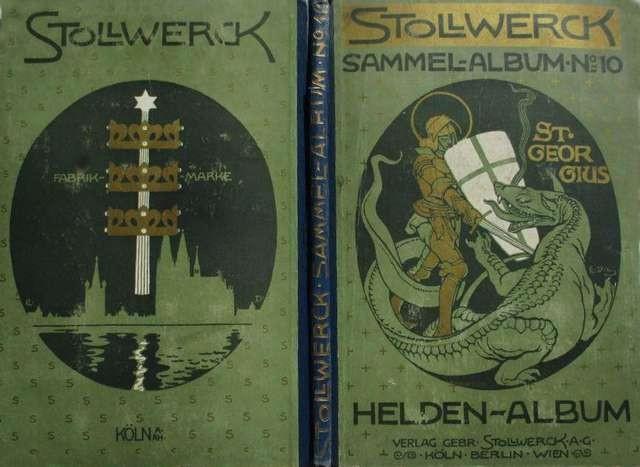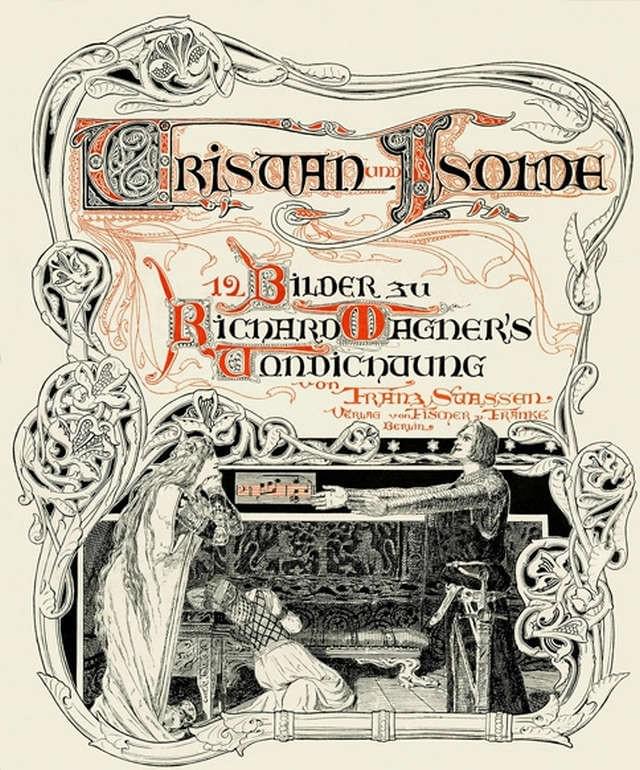
FRANZ STASSEN, ARTIST AND ILLUSTRATOR
Franz Stassen's Biography
Franz Stassen was a German painter, illustrator, and designer. This very versatile artist was born on February 12th, 1869 in Hanau and studied in Berlin (Berlin College of Fine Arts) between 1886 and 1892. These two cities became his main working locations as well, Hanau at first and Berlin later.

He started as a naturalist but soon turned to the Art Nouveau style (in German-speaking countries often named Jugendstil), influenced by symbolists like Gustav Klimt, Koloman Moser, and Sascha Schneider. His main source of income was book illustration with more than one hundred books signed by his name. He designed book covers, postcards, and ex-libris as well. In 1908, for instance, he made a Helden-Album for chocolatier Ludwig Stollwerck in Cologne. Such albums are very highly praised among collectors today.

His love for fantastic worlds led him to explorations of German mythology, especially everything related to Wagner's work. He befriended Siegfried Wagner, Richard's son, who was also a composer, and illustrated some of his works as well. Stasen's artistic expression was a mixture of symbolism and realism, especially excelling at eye movements and dramatic, often pathetic gestures as seen in then fast-expanding photography and cinematography.

Stassen became closely connected with nationalistic Bayreuth Circle which strongly supported Adolf Hitler and is connected with the rise of Nazism. Stassen's works were already very popular in so-called Wilhelmine Germany (roughly the period ending by the First World War) and some people see them as influential impacts of the development of American heroic Comic book style. One of the signature characteristics of his style was the incorporation of leitmotifs and musical staves into his illustrations.

Critics praised him as an important contributor to the perception of ideals of Germanic superiority with esoteric and spiritual Christianity.

Apart from Wagnerian stuff he also illustrated other important works like Goethe's Faust, Grimm's Fairy Tales, and other cornerstones of art as one of the fundaments of the Third Reich. Of course, he created paintings, posters, and other works too. His most important solo exhibition took place in Bayreuth in 1937 and Dresden in 1940.

Stassen was a member of NSDAP since 1930 and was appointed as an honorary professor by Adolf Hitler who ordered tapestries for the Reich Chancellery with motifs from Edda (Icelandic myth) from him. In 1944 Joseph Goebbels put him on the list of crucial artists for Nazism.
Although married as a youngster (but his wife Mina died in 1913), he preferred men and lived with one for most of his life. After World War 2, he tried to reconstruct many of his works, damaged due to war. Franz Stassen died on April 18th, 1949.

This is Franz Stassen's bibliography:
- Sun Children, Fairy Tales III by Franz Lechleitner, Berlin, 1900
- Behind the Earth Day by Theodor Volbehr, Berlin, 1901
- Legends of the Rhine by Arthur Kusche, Mainz, 1902
- A Dante wreath, Berlin 1906
- The New Testament by Hermann Menge, Braunschweig, 1909
- Golden fruits from fairytale land - fairy tales for young and old by Elisabeth Gnauck-Kühne, 1910, Bremen
- Siegfried Wagner and his art by Carl Friedrich Glasenapp, Leipzig, 1911
- The Nibelungen, Rudolf Herzog, Berlin, Vienna, 1913
- Parsifal, Berlin, 1914
- German Christmas, A gift of love from German students, Berlin, 1914
- A Mighty Fortress Is Our God - Devotional book for the German Home, Berlin, 1916
- The seven ravens by Brothers Grimm, Mainz 1917
- The Edda - Germanic legends of gods and heroes, First volume, Legends of the gods by Hans von Wolzogen, Berlin, 1919
- Rose songs by Philipp von Eulenburg, Berlin, 1919
- My singing, sounding Vienna by Ernst Descey, Munich, Berlin, Vienna, 1920
- Beowulf – Gudrun by Hans von Wolzogen, Berlin, 1920
- German humor in old and new times (2 volumes), Berlin, 1920
- Mr. Purtaller and his daughter by Gustav Falke, Stuttgart, 1921
- Little Red Riding Hood and six other of the most beautiful fairy tales by Brothers Grimm, Berlin, 1921
- Hansel and Gretel and other fairy tales by Brothers Grimm, Berlin, 1922
- The Island of the Happy - A Book of Joy (poetry collection), Berlin, 1923
- On the Experience of God - A Book of German Faith, Berlin, 1923
- Selected Works by Joseph Eichendorff, Berlin, 1925
- The Master of Tanagra - An Artist's Story from Old Hellas by Ernst von Wildenbruch, Berlin, 1925
- Silentium – Old and new student, commercial and folk songs for piano with complete texts, Berlin, Munich, 1929
- About all kinds of pranksters and Sunday children - humorous stories, Berlin, 1934
- Of holy and unholy people - humorous stories, Berlin, 1935
- Heroes argue gods wrestle - German legends of heroes and gods by Gerhard Krugel, Frankfurt on Main, 1939
- People Fight - Fairy Tales of Bravery and Loyalty by Gerhard Krugel, Frankfurt on Main, 1943
While this list is far from being complete, the themes that were most attractive to Franz Stassen are clear: religion, mythology, music, and fairy tales.
Note: This mini website is a part of The Vintage Artists On-Line Project.







